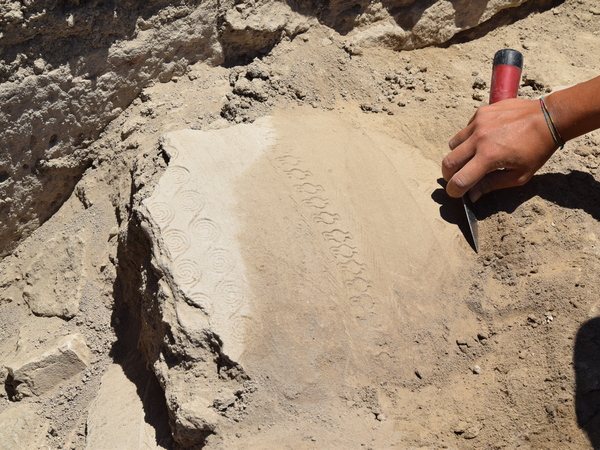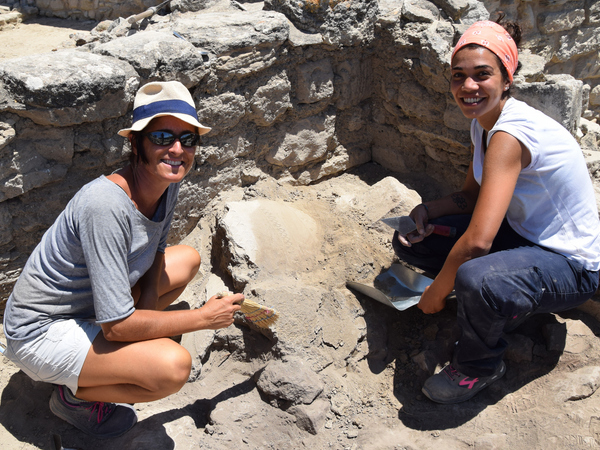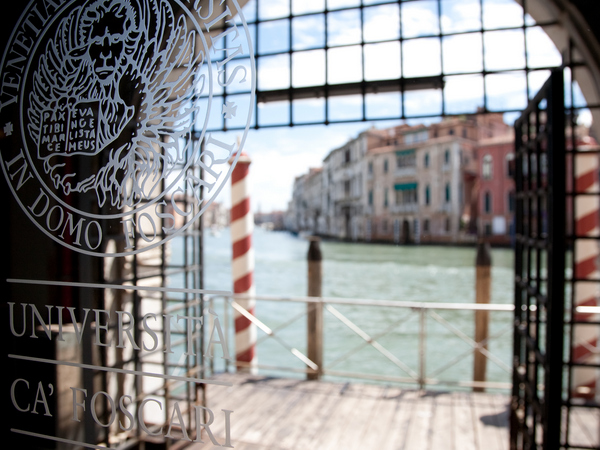Which ancient warrior had worn that helmet? To whom did this once shining and decorated armour belong? Was the armour deposited in a cult place in honour of a local hero? Researchers from Ca' Foscari University of Venice asked themselves many such questions when, during the 2023 archaeological excavation at Phaistos, on the Greek island of Crete, they gradually unearthed a warrior's armour.
This remarkable discovery - a bronze panoply consisting of a shield boss, fragments of a helmet and possibly a belt - occurred during the archaeological excavation at Phaistos (Crete) in July 2023. The excavation was led by Professor Ilaria Caloi's team from Ca’ Foscari, under the direction of Professor Pietro Militello from the University of Catania. Works began in 2022, and were conducted under the aegis of the Italian Archaeological School of Athens [ITA], directed by Professor Emanuele Papi, and authorized by Vassiliki Sythiakaki, head of the 13th Greek Ephorate.


In Greece, the finding of a warrior's panoply in a settlement rather than in a funerary context is extremely rare. This prompted the researchers to question the origin and function of these weapons.
"The most intriguing hypothesis, which only further excavation can confirm," explains Ilaria Caloi, "is that the armour may have belonged to a local hero, to whom honour was paid in a cult area, or a cenotaph, in connection with the foundation of the polis of Phaistos between the 8th and 7th century BC."
The bronze shield boss that was brought to light is the central part of a shield, which was likely made of perishable material, possibly leather. The shield boss is composed of a central conical element with a long protrusion and an outer disk with a series of holes around the edge, probably used for fastening it. On the inner side there is a central, protruding bronze ring which probably served for the same purpose.

The best-preserved part of the helmet are the two cheek-pieces, which protected each side of the face down to the jaw. They are decorated with circular motifs and have small holes used for fixing them to the helmet. They are currently in restoration.
"The extraordinary feature of the Phaistos discovery," adds Caloi, "is that the armour was retrieved from a non-funerary context. These pieces were found inside a pithos, a large storage container with a diameter of almost 120 cm. They were hidden beneath a terracotta lid, which was in turn covered by a large fragment of a vessel with decorative motifs in the shape of small juglets (oinochoai) and running spirals. The pithos containing the panoply was found in the northeast corner of a large space, Room OO, which is still under excavation, and opened to the east with an entrance showing a massive monolithic threshold measuring 160 cm in length.

The area where the discoveries were made might have been a place of worship: this hypothesis is supported by the ritual arrangement of the panoply and by the appearance of the room.
The objects found all around the large pithos support this hypothesis as well. They include two iron knives, a series of differently sized pouring vessels (aryballoi) dating from the 8th to 7th centuries BC, and a small terracotta shield, painted in white. These objects are reminiscent of a warrior's grave, but in this case they could be seen as votive offerings in a cult area.
The location of the discovery is equally significant: it is on the southwestern slopes of Kastri, the same hill on which the First Palace of Phaistos was built in the 19th century BC, and just west of the grand West Court of the Palace.
The finding of such weapons is much more common in the wealthy Greek burials. In Crete, the best-preserved specimens were found in the necropoleis of Knossos, Mouliana (Siteia), and Eleutherna, and date from the 12th to the 7th centuries BC.
However, the closest comparisons for the shield and cheek-pieces from Phaistos were found in areas outside Crete: in Tomb XXVIII of Tiryns, in Argolis, dating to the Sub-Mycenaean period (11th century BC), and in Tomb 40 of Kourion-Kaloriziki in Cyprus. This is further confirmation that in the period spanning from the Late Bronze Age to the early Iron Age Phaistos was still well connected both within the Aegean world and with the more distant lands of the Eastern Mediterranean.
This unique discovery sheds new light on a crucial period for the archaeological site of Phaistos: the foundation of the polis. An important piece is being added to the history of this millennia-old centre: founded in the 5th millennium BC, Phaistos first became a Minoan palace, akin to Knossos, and then a Greek polis. It remained an important centre until its destruction by the nearby Gortyn in 146 BC.
The archaeological site of Phaistos, now a candidate for UNESCO World Heritage Site together with other Minoan Palatial Centres on the island, has been at the centre of Ca’ Foscari’s archaeological research since the 1990s, and it continues to amaze us with extraordinary discoveries.










